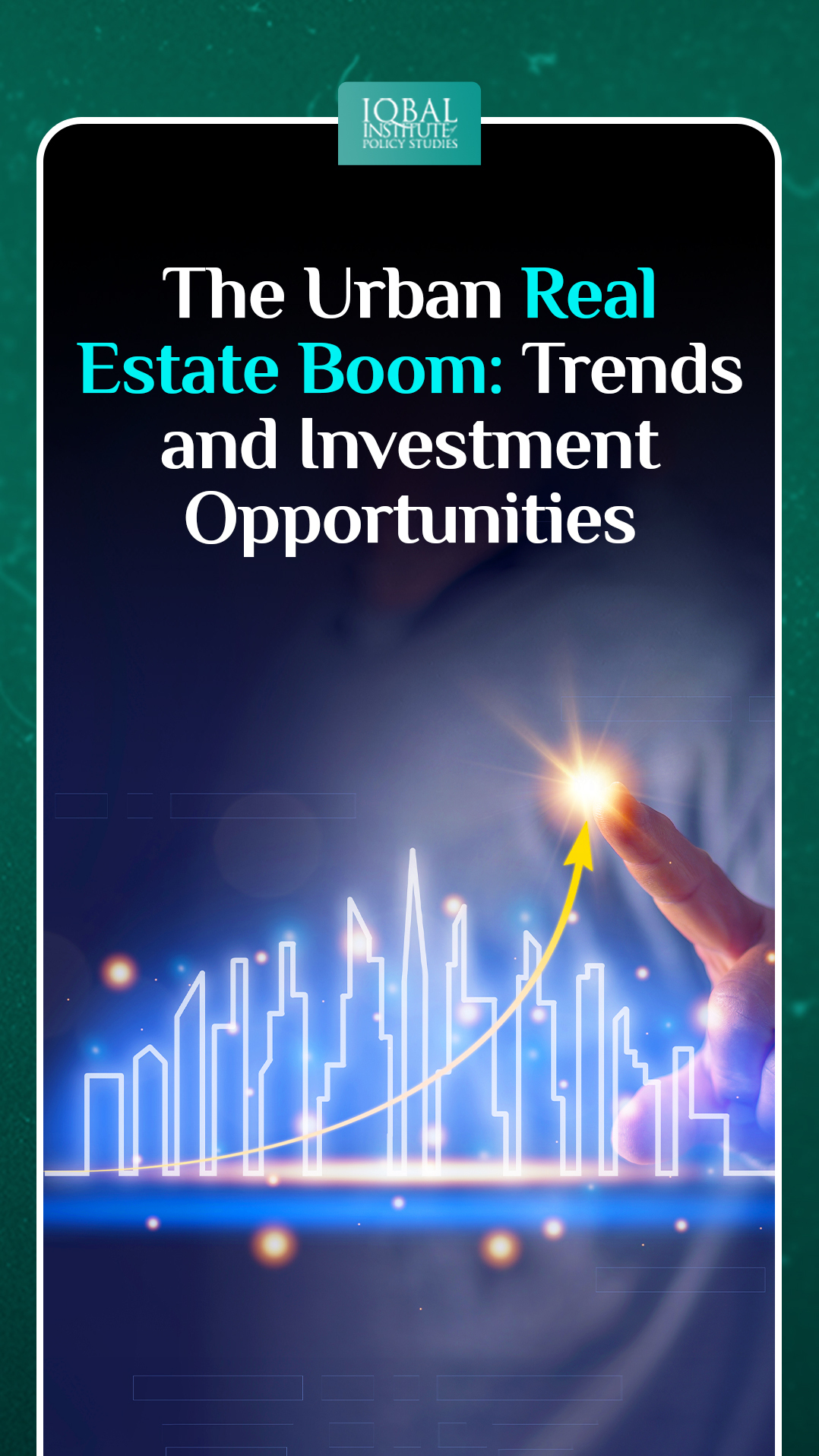As the world’s population increasingly flocks to urban areas, the importance of the urban real estate market has reached unprecedented levels. Today, more than half of the world’s population resides in cities, and this trend shows no signs of slowing down. As a result, urban areas have transformed into epicenters of economic activity, innovation, and cultural vibrancy, making them magnets for individuals seeking opportunities and experiences. Moreover, the values of properties in prime urban locations have continued to appreciate, and savvy investors have found lucrative opportunities in a variety of segments, from residential and commercial spaces to transformative mixed-use developments. However, the urban real estate landscape is not a the same; it is a dynamic mosaic of trends, influenced by societal shifts and market forces. Therefore, to navigate this complex and ever-changing terrain, investors must possess a deep understanding of the trends that shape it. This will enable real estate investors to attain long-term benefits and prosperity.
Understanding the Urban Real Estate Boom
As follows are the core drivers underpinning the urban real estate boom:
Population Growth
Presently, approximately 56% of the global population, equivalent to 4.4 billion individuals, resides in urban areas. Projections indicate that this trend will persist, leading to a more than twofold increase in the urban population by 2050. At that juncture, nearly 7 out of every 10 people will call cities their home (World Bank, 2023). Moreover, the demand for urban housing and commercial spaces is surging due to factors such as rural-to-urban migration, job opportunities, and international immigration.
Economic Prosperity
Urban centers have traditionally served as economic powerhouses, attracting businesses, talent, and investors. For instance, urbanization is responsible for generating over 80% of the world’s global GDP (World Bank, 2023). This economic prowess has a direct impact on real estate, driving up property values as businesses expand and job markets thrive.
Technological Advancements
The digital transformation of industries and the rise of remote work have altered the dynamics of urban living. Proximity to job opportunities, entertainment, and cultural amenities has become even more valuable in this digital age, fueling the urban real estate boom.
Sustainable Development
The global emphasis on sustainability and green living is reshaping urban landscapes. Cities are investing in urban renewal and development projects that prioritize sustainability. These initiatives often include mixed-use developments, where residential, commercial, and green spaces coexist harmoniously.
Trends in Urban Real Estate
Below are the prevailing trends in urban real estate:
Mixed-Use Developments
Mixed-use projects are at the forefront of urban real estate trends. These developments seamlessly blend residential, commercial, and recreational spaces, creating vibrant, walkable communities. The National Association of Realtors indicate that mixed-use properties are in high demand, with millennials and baby boomers showing a strong preference for such environments. Investors can benefit by acquiring units in mixed-use properties or by partnering with real estate development firms specializing in these projects.
Luxury High-Rises
Luxury high-rise condominiums are soaring in popularity, particularly in major cities. High-net-worth individuals seeking an urban lifestyle are driving the demand for upscale residences. The size of the worldwide real estate market reached USD 9.52 billion in 2021, and it is anticipated to attain USD 14.55 billion by 2030, exhibiting a compound annual growth rate (CAGR) of 4.8% during the period from 2022 to 2030 (Next Move Strategy, 2022). Investors who enter this segment can reap substantial rental income and long-term appreciation potential.
Adaptive Reuse Projects
The adaptive reuse trend involves repurposing old warehouses, factories, and historic buildings into modern apartments, offices, and retail spaces. Beyond preserving cultural heritage, these projects offer unique investment opportunities. A study by the Urban Land Institute indicates that adaptive reuse can yield returns on investment comparable to new construction, making it an attractive avenue for investors.
Tech-Enabled Amenities
The proliferation of smart technology has led to a wave of tech-enabled amenities in urban real estate. Features such as keyless entry, integrated smart home systems, and high-speed internet connectivity are increasingly expected by tenants. Investors who choose properties equipped with these amenities can attract tech-savvy renters and potentially command higher rental yields.
Sustainable and Eco-Friendly Buildings
With environmental consciousness on the rise, demand for sustainable, eco-friendly buildings is robust. Properties with energy-efficient features, green roofs, and LEED certifications are not only appealing to environmentally conscious tenants but also aligned with long-term trends in urban development.On a global scale, 85 percent of individuals report a shift in their purchasing habits towards greater sustainability over the past five years (businesswire, 2021).
Investment Opportunities
Following are investment prospects to consider:
Residential Real Estate
The urban residential sector remains a robust investment option. Investors should consider acquiring condos or apartment units in areas with strong job markets, top-rated schools, and convenient access to public transportation.
Commercial Real Estate
Office spaces, retail properties, and coworking spaces in thriving urban areas can provide steady rental income. To maximize returns, focus on locations with a robust business ecosystem and high foot traffic.
Real Estate Investment Trusts (REITs)
Real Estate Investment Trusts offer investors a diversified portfolio of real estate assets, often with attractive dividend yields.For instance, In 2021, the FTSE Nareit All Equity REITs index exhibited robust performance, delivering a total return of 41.3%. Simultaneously, the FTSE Nareit Equity REITs index witnessed an increase of 43.2% (Barwick, 2022). Also, REITs provide an excellent way to gain exposure to urban real estate without the burden of direct property ownership.
Real Estate Crowdfunding
Crowdfunding platforms have democratized real estate investing, allowing individuals to participate in urban real estate projects with relatively low capital requirements. These platforms offer opportunities for diversification across multiple properties or developments, mitigating risk.
Short-Term Rentals
The rise of platforms like Airbnb has transformed short-term rentals into a lucrative investment avenue. Urban areas often attract tourists and business travelers, making them ideal locations for this type of investment. According to AirDNA, the global vacation rental market is projected to reach $113.9 billion by 2027 (Grand View Research, 2020), presenting substantial opportunities for investors.
Real Estate Development Companies
Consider investing in real estate development companies with a strong track record in urban projects. These companies have the expertise to navigate complex urban development regulations and can provide exposure to a diversified set of opportunities.
Conclusion
The urban real estate boom represents a compelling investment landscape with a multitude of opportunities. As cities continue to evolve and grow, the demand for urban real estate is expected to remain strong. However, it is crucial to conduct thorough due diligence, stay informed about current trends, and seek professional advice when necessary to make informed decisions in this ever-evolving market.
References
Barwick, J. (2022, January 4). REITs Post Second-Strongest Year on Record in 2021. REIT.com. Retrieved September 5, 2023, from https://www.reit.com/news/blog/market-commentary/reits-post-second-strongest-year-record-2021
businesswire. (2021, October 14). Recent Study Reveals More Than a Third of Global Consumers Are Willing to Pay More for Sustainability as Demand Grows for Environmentally-Friendly Alternatives. Business Wire. Retrieved September 5, 2023, from https://www.businesswire.com/news/home/20211014005090/en/Recent-Study-Reveals-More-Than-a-Third-of-Global-Consumers-Are-Willing-to-Pay-More-for-Sustainability-as-Demand-Grows-for-Environmentally-Friendly-Alternatives
Grand View Research. (2020, May 21). Vacation Rental Market Size Worth $113.9 Billion by 2027 | CAGR: 3.4%: Grand View Research, Inc. PR Newswire. Retrieved September 5, 2023, from https://www.prnewswire.com/news-releases/vacation-rental-market-size-worth-113-9-billion-by-2027–cagr-3-4-grand-view-research-inc-301063412.html
Next Move Strategy. (2022, April). Real Estate Market Analysis Report | 2022 – 2030. Next Move Strategy Consulting. Retrieved September 5, 2023, from https://www.nextmsc.com/report/real-estate-market
World Bank. (2023, April 3). Urban Development Overview. World Bank. Retrieved September 5, 2023, from https://www.worldbank.org/en/topic/urbandevelopment/overview
This article is written by Haneen Gul. Haneen is a research analyst at the Iqbal Institute of Policy Studies (IIPS).



Leave a Reply